Blockchains provide a new perspective on social media networks. Here are the first two reasons that could make them popular among users worldwide.

To succeed, decentralized social media networks must have a unique value proposition. Many recognize the enormous potential of public blockchain infrastructure to become the breeding ground for this new generation of applications. Apps that not only aim to be technologically superior, but to dramatically change the relationship between users and service providers. They can disrupt the currently established power balance and nurture a sharing economy in a world of finite resources, glaring global inequality and unstable concentrations of power.
Social networks, as tools used by billions on a daily basis, are an interesting use-case for decentralized apps. As mentioned in the first part of the series, these new types of networks face an enormous challenge. They need to be at least 10 times better than current solutions to be disruptive. Their challenge is two-fold:
- They need to be as user-friendly as centralized solutions, despite the completely new infrastructure they are built on
- They need to have unique value propositions as opposed to centralized apps
In the coming series, we will look at the features that blockchain-based social networks could offer and some of the pioneers trying to realize them. This entry will focus on two specific advantages:
- Data control for users and self-sovereign identity
- Encrypted chat by default
Data Control and Self-Sovereign Identity
Data is valuable. The rise of the tech giants that focused on data aggregation, management and segmentation is a testimony to that. Despite the fact that most people are familiar with the popular expression Information is Power, few are able to convert it into an actionable insight in the digital world.
Your identity data is a white-hot commodity. [lifeID]
People are quite used to providing their information freely to any new service they want to use. It is hard for many to grasp that “creating your online profile” does not only mean filling in some fields in a form and uploading a nice profile/cover photo. Your profile is actually built up by anything you do online. Every action you take in the digital space is recorded, stored and processed. Finally, it is converted to power and wealth, focused in the hands of the friendly digital service providers that are not supposed to be evil.
Do you know how many registrations on different websites you have completed since the time you first joined the internet? How many services have your names, phone, ID or Passport number? How many of those know your address, your bank account details, your location? How many services know that you are into gaming, have recently bought a bike and like to go to blockchain meetups? Who can remember all this, right? What control do you really have on your data?
Today, one’s identity on the Internet is fragmented across various identity providers – employers, Internet portals, various communities, and business services. This fragmentation yields isolated, high-friction, one-to-one customer-to-business relationships and experiences. [Ken Jordan et al., First Monday]
Every universal identifier is a major correlation risk – even your mobile phone number. [Slashdot]
No, GDPR does not help. The whole digital identity and data management field is still a big mess. A mess that makes you vulnerable to data thefts, data abuses and generally causes you not to benefit from a resource that is highly valuable. Moreover, what GDPR does is to make you (once again) dependent on third parties. You cannot manage your data. What you can do is instruct third parties about what you want them to do with it. Are they doing it? How would you know!?!

One solution to this predicament could be self-sovereign identity (SSI). We recently published a whole blog post on the subject, but here is the essence.
SSI provides users with sovereignty over their digital selves to the same degree that they have control over their physical selves. [Kaliya Young, CoinDesk]
Since blockchains provide a transparent, immutable, reliable and auditable way to address the seamless and secure exchange of cryptographic keys, they could be the perfect platforms for SSI.
SSI allows users to prove things about themselves using decentralized, verifiable credentials just as they do offline. [Phillip Windley, Computerworld]
There are many companies that work on SSI on top of a blockchain. Some use permissioned infrastructure, others – a public blockchain, yet others create completely new blockchain protocols. These could be integrated into social media platforms and allow users to not freely share their personal data, but monetize it. All these projects working on SSI realize that:
The currency of the future is personal data. [Amber Baldet, Quartz]
Sovrin
Hyperledger Indy’s codebase is being utilized by Sovrin for their SSI solution. Hyperledger Indy is open-source and provides tools, libraries, and reusable components for creating and using independent digital identities rooted on blockchains or other distributed ledgers so that they are interoperable across administrative domains and applications. Sovrin uses those for their ambitious vision of an SSI, executed on a hybrid blockchain (read on).
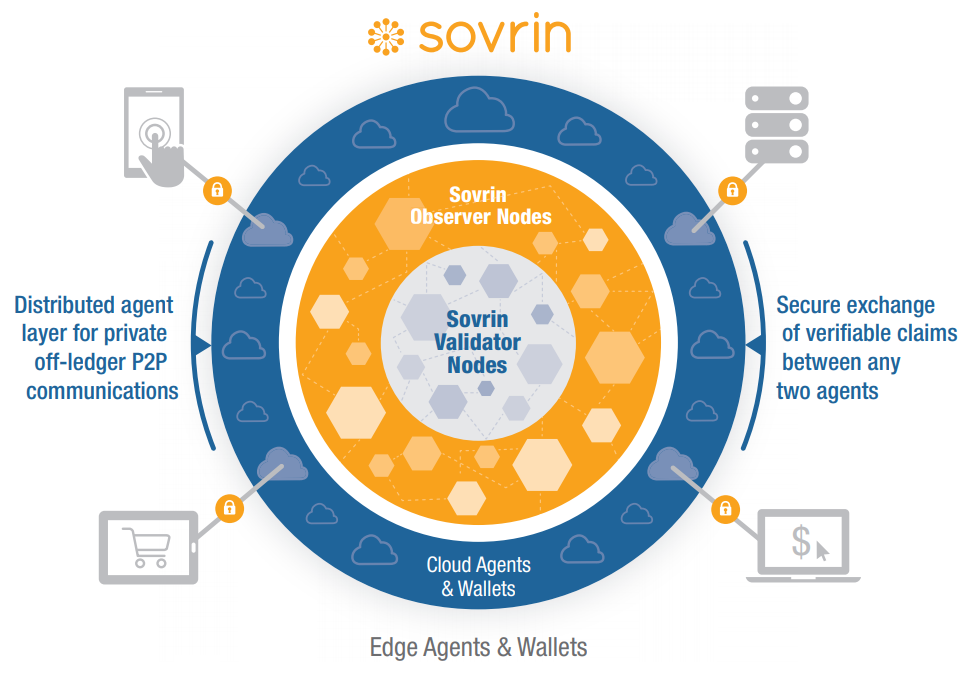
It uses decentralized identifiers developed by the W3C which allow “permanent, globally unique, cryptographically verifiable identifiers entirely under the identity owner’s control”. Moreover, Sovrin is built to be platform-agnostic, meaning that it can be incorporated in any solution that wants to feature SSI.
The “not so great” part is that it is a hybrid public permissioned blockchain. No token sale or mining here. Running a validator node can only happen after an off-chain application process. You can see a list of the current stewards (which most likely refers to validator nodes, it is not clear to us) here. Generally, an interesting project that looks like an alliance of companies that are exploring SSI.
LifeID
The lifeID platform has taken a different approach to SSI. It aims to realize SSI via a system of smart-contracts that could run on any blockchain platform. Their product is fully open-source and permissionless, which is fundamental for SSI. It utilizes mobile biometric technology for identity creation and verification. Identity information is not stored on servers or in the cloud, but only on a user’s device in an encrypted format. Users maintain 100% control over their data. The solution should also be easy to integrate, so if you are developing a decentralized social media platform that needs SSI – you are welcome.
uPort
uPort is building a SSI solution on top of the Ethereum platform. It allows users to send and request credentials, sign transactions, and securely manage keys & data. All identities are registered on the Ethereum network. Again, having in mind that this service is executed via smart-contracts, it may be portable to any other blockchain platform. The company is also partnering with Status, who provide an encrypted chat service (that will be considered below).

Veres One
Veres One‘s approach to SSI is similar to Sovrin’s – develop a completely new blockchain protocol that addresses identity protection and control. The platform also features Decentralized Identifiers (DIDs) and different types of nodes. Anyone can become a simple node, but in order to become a validator – one needs to go through a lightweight approval process. It is not really clear what the incentive to become a node is. In addition to nodes, Veres One features accelerators, who actually create and update DIDs (and get paid for it). They also need to go through an approval process (lightweight, not mentioned this time).

It is interesting that the protocol does not utilize coins or tokens. The documentation mentions that fees need to be paid for the creation or modification of DID, but there is no mention of how those fees are to be paid (through PayPal, perhaps?). Nonetheless, despite the fact that clarity on how payments work will be welcome, Veres One should be a permissionless, leaderless, sustainable platform based entirely on open standards and open specifications. Having in mind the application processes, the permissionless and leaderless part are obviously works in progress. Learn more about the project by browsing through its documentation.
Blockstack
Blockstack is trying to solve the identity on the blockchain problem a step at a time. The project is not trying to enable SSI, but is creating a decentralized naming service that will match human-readable names with public addresses. It is similar to a DNS service, but decentralized. This service is called Blockchain Name System or BNS. According to their whitepaper, after the BNS is live, third-party attestations can be attached to the names. This could create customizable identities. Using the BNS, users can log in to apps and services by using blockchain-based decentralized identity and save data generated by apps/services on storage backends owned by the user (instead of the service provider). æternity’s approach to identity is very similar to Blockstack’s. æternity’s naming system or AENS will be introduced after the launch of the Mainnet. Names will be distributed through an auction process and will allow users to link accounts to easy-to-use handles.
Telegram
Finally, Telegram, which is one of the most widely used communication platforms for blockchain and cryptocurrency discussions, organized an ICO in 2018. That managed to increase the company’s financial assets by $1.7 billion and earn the company a status of the most successful ICO to date. The significant proceeds should be used for the development of Telegram’s Open Network, a feature-rich blockchain platform supposedly in development.
In July, 2018 Telegram managed to announce Passport, a self-sovereign identity solution. For the time being, it will store identity-related data on the Telegram cloud, secured by end-to-end encryption and not a blockchain. The service is already integrated in epayments.com.

It remains to be seen if Telegram will be able to make good on their promises and use the 1.7 billion (!?!) to develop their quite ambitious vision of a multi-purpose blockchain platform. Many are not convinced they can do it. Pantera Capital’s Charles Noyes called the project “opportunistic” with a white paper that is a wishlist of things they want to have and no contribution to any type of blockchain-related research. Telegram’s Gram token is still not available on any exchange and it is not clear when it will be.
Civic
The honorable mention here is Civic. Civic is not trying to enable SSI but is one of the most recognizable players in the decentralized identity space. Civic’s Secure Identity Platform utilizes blockchain tech and biometrics on a mobile device, to provide multi-factor authentication without a username, password, third-party authenticator, or physical hardware token.
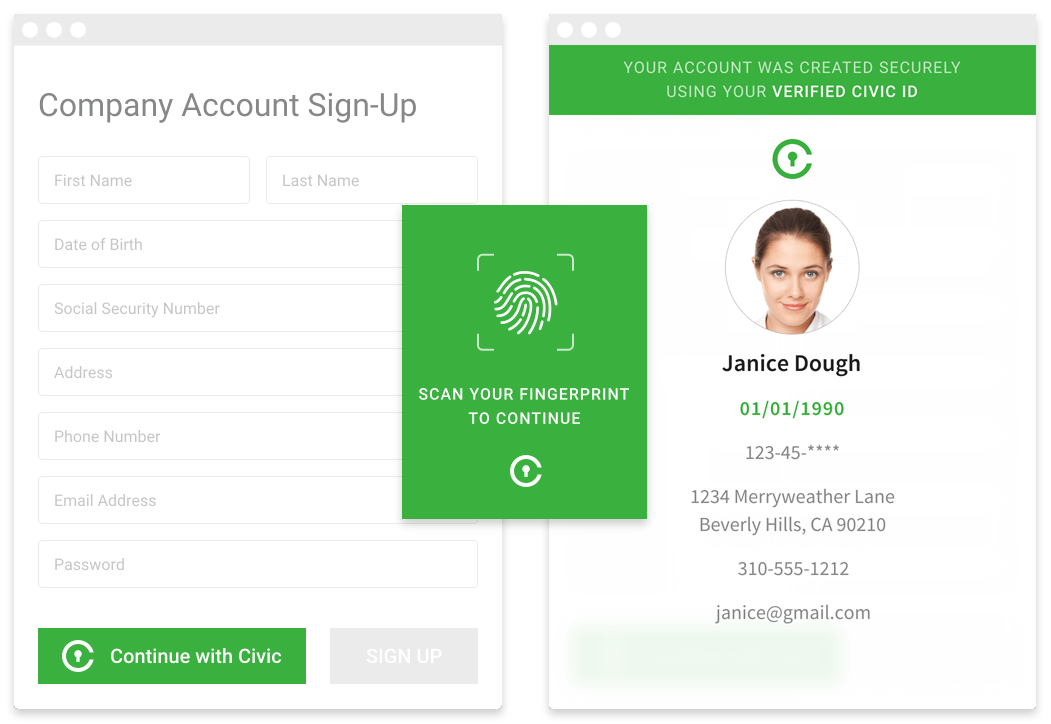
For better or for worse, some of their services rely on third-parties to verify identity. Once the verification is complete, identity and data management should be easy. Using third-third party verifiers allows service providers to use different verification procedures which introduces integration flexibility. The requirements of know-your-customer (KYC) checks are service-dependent. Banking, finance, etc. usually demand more stringent KYC control.
While these services may sound similar to Facebook Login, [they] offer both privacy of data transactions and greater trust in user identity. [Civic.com]
There are many other blockchain, semi- and non-blockchain solutions out there that are searching for the best approach to improved identity and personal data management. A whole spectrum of these exists and some will be more suitable to Social Networks 2.0 than others. Implementing SSI in a decentralized social network will fundamentally change the dynamics of the network. It will certainty require a modification of the business model (tokenomics most probably) and will enable users to have significantly more control over how their valuable personal information is used. SSI in a blockchain-based social network will be the foundation upon which further value can be created for users.
However, only time will tell if SSI actually solves any problems that users experience. The main user problem that we see is – Why am I not being paid for sharing my data?
In the future, we might not have to use centralized authorization services to access the Internet such as Twitter, Google or Facebook and instead we will use our Self Sovereign Identity to validate our identity without having to rely on third parties. [Alex Preukschat, Medium]
Encrypted Chat by Default
Encrypted communication is becoming the preferred mode of exchanging information between users. The most popular messaging services have already introduced end-to-end encryption. Facebook’s Messenger, WhatsApp, Telegram, Viber, Wire and Signal have all implemented message encryption (some were created for that very purpose). However, chat encryption can mean many things. Here is a comparison chart:
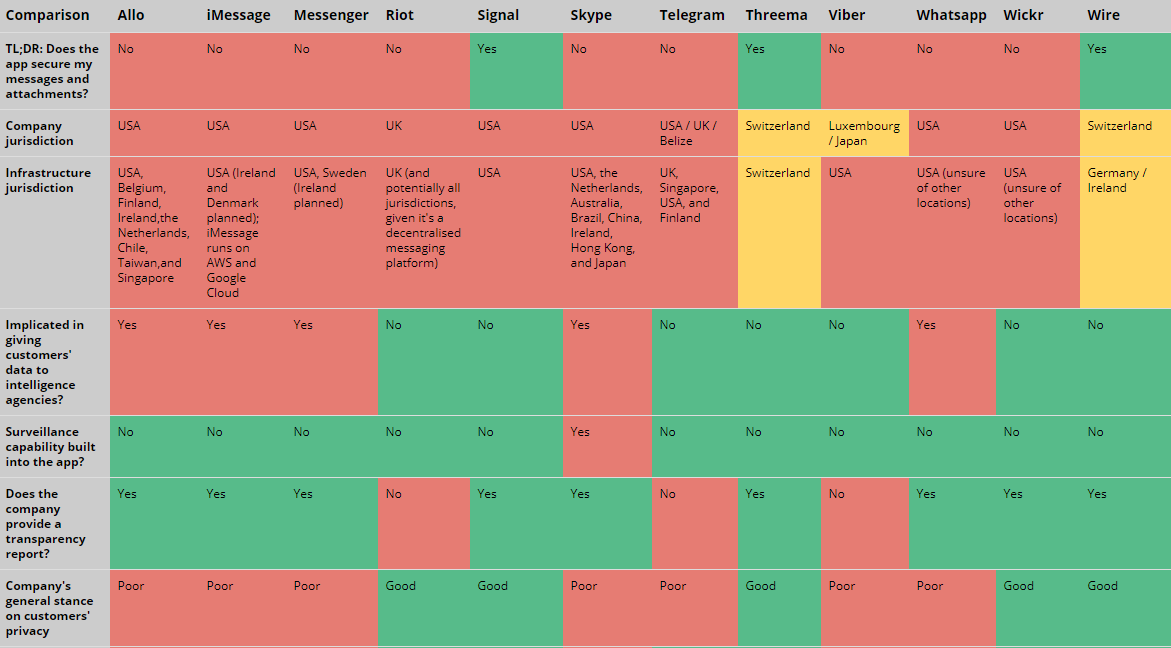
Turns out that not all message encryption is created equal. Services like Facebook’s Messenger allow encryption only on mobile devices. Encryption is actually not enabled by default for many messaging platforms. No need to encrypt anything if you are discussing Winnie the Pooh in private chats, right? The thing is – you never know what issues your rulers might suffer from.
The Winnie the Pooh character become a lighthearted way for people across China to mock their president, Xi Jinping, but it seems the government did not find the joke very funny. As comparisons grew and the meme spread online, censors began erasing the images which mocked Xi. [The Guardian]



Having in mind that China will be introducing a dystopian Social Score system in 2020, could the fact that you have distributed Pooh memes in chats affect your ability to access social services? Would you care to find out?
Moreover, most of these chat service providers are not using completely open source apps and servers. This means that the integrity of their security claims cannot be verified. In addition, Messenger, Skype and WhatsApp have already been implicated in providing chat information to third parties. In the case of Messenger, all non-encrypted chat communication is monitored by Facebook. Encrypted chats are end-to-end encrypted BUT the database that stores them is not. Timestamps, text, from and to names, phone numbers, paths to attachments is all there.
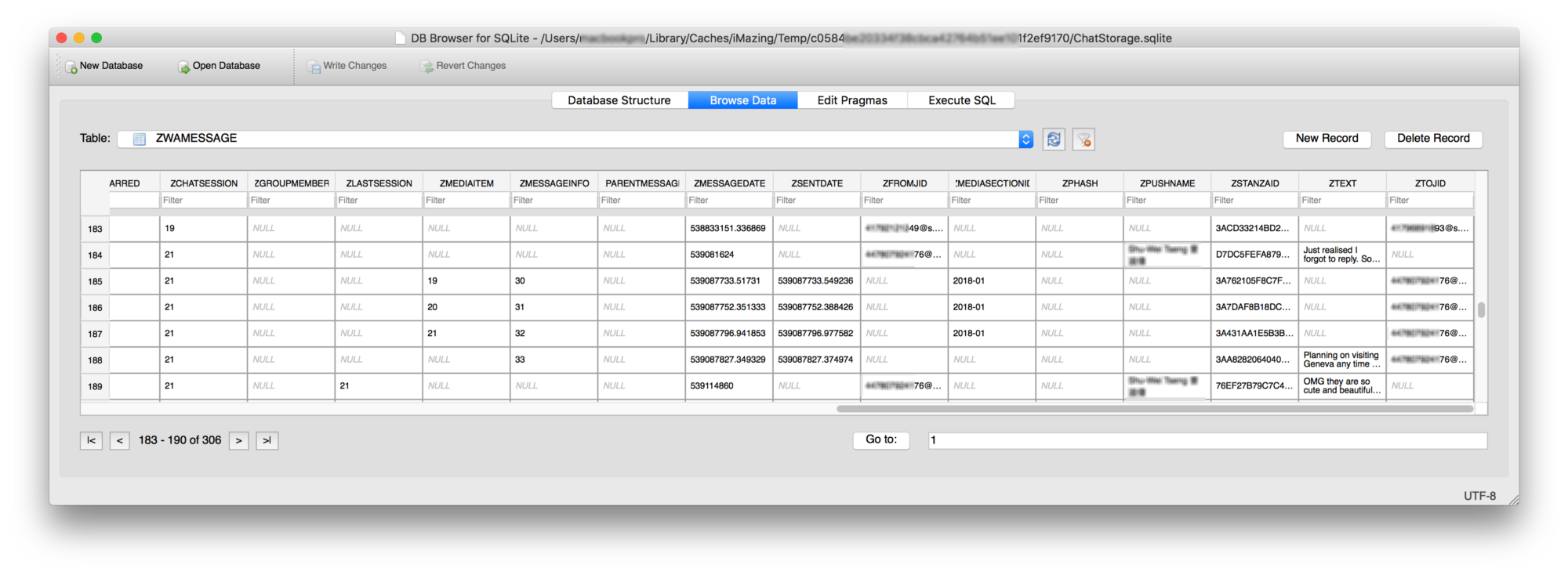
And we come to the topic of databases, a sphere in which blockchain protocols have much to offer. Can blockchain technology be used to secure online communication? Absolutely. Any decentralized social media platform must learn from the best practices currently available in the messenger field and consider integrating open-source and/or blockchain messaging solution to avoid the prying eyes of big brothers, sisters, mothers and fathers.
There are a few points that need attention when speaking about blockchain-based communication solutions. If you have been around the cryptocurrency industry since 2013, you should remember that there was a project called Bitmessage. It was a decentralized, encrypted, peer-to-peer, trustless communications protocol based on Bitcoin. Despite initially attracting a lot of interest, the messenger app slowly fell into oblivion. Its imperfect user-interface could have been one reason for this:
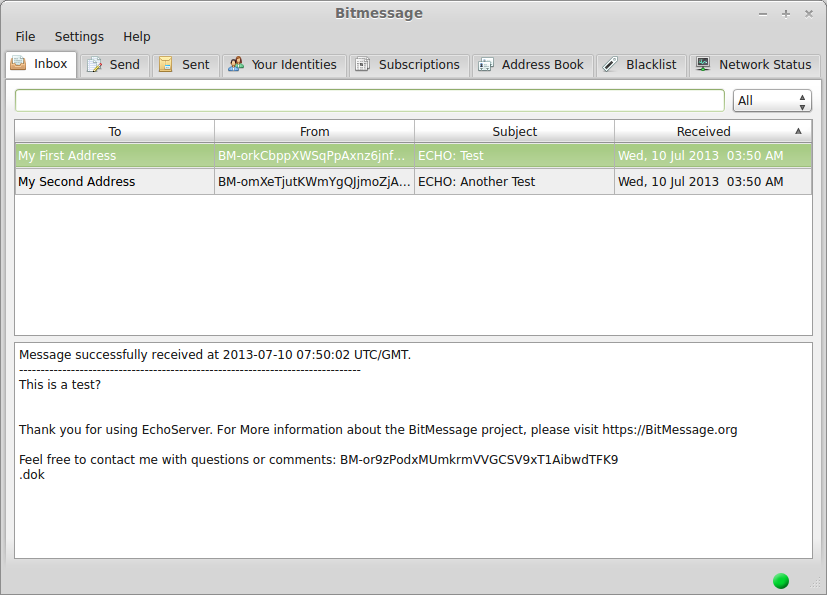
There could have been another – the speed of message distribution. According to the protocol, outgoing messages did not contain the explicit address of the recipient of the message, so every network participant had to attempt decrypting EVERY message passing through the network. That resulted in messages taking about 15 seconds to propagate, reaching ~3 minutes during peak times. To that, users had to add the time for the generation of a proof-of-work by the Bitmessage client which is mandatory for all messages and prevents spam.
To recap, the problems that Bitmessage faced were related to user-friendliness and scalability. Both are still essential points to consider when developing a blockchain-based messenger.
There is yet another issue that could make this type of communication platform unattractive to a larger audience – cost. It is important not to forget that using a public blockchain protocol is not free. Miners and users both pay to use the network. Miners are spending money to find the proof-of-work (as in the case of Bitmessage, although not a blockchain) and forgers (or bakers, or whatever) post security deposits in Proof-of-Stake networks. On the user side – making transactions and running smart contracts requires the payment of fees and gas.
This creates a trade-off – a speed-related and/or financial inconvenience for the sake of security, privacy and no single points of failure (decentralization).
Can this be an insurmountable obstacle to the adoption of blockchain-based services? It is possible. Users are after all used to services with no upfront cost. In the end, when it comes to blockchain-based social media – it might be easier to adopt a non-blockchain, but completely open-source, secure messenger service like Wire (we like Wire). Nonetheless, there are a few pretty good blockchain-based communication solutions out there. They fully realize the above-mentioned trade-off and aim to address it. Let us consider a few.
Status
Status is a hybrid browser and messenger that runs on the Ethereum network. The curious thing here is that it does not use the Ethereum Virtual Machine (which could be costly to use), but only the devp2p (the transport layer for the whole of Ethereum). This means that sending a message does not have a price tag.
There are a number of problems, however. In its current implementation, the Status protocol requires the availability of peers around the globe to provide a reliable service. This means that a minimal number of people should run a node in support of the network. Doing so, however, is not incentivized and at the same time requires high uptime (forget about shutting down your computer). Moreover, nodes that are running as Mail Servers (store messages) are trusted and could “leak” some of the data. Finally, despite being presented as utility tokens, the SNT (Status’ tokens) currently have no real use. Here is how a Reddit user replied to the question What is SNT used for?
![Basically, just like all ICOs you saw advertised on Facebook. [Link to comment]](https://blog.aeternity.com/wp-content/uploads/2024/01/10fJb58B7bJTEiaHBigxYiQ.png)
There is a less amusing explanation available in the whitepaper. It states that SNTs could be used by users to pay for push-notifications. I can hardly consider this a killer use-case. Nonetheless, the Status team recently released a naming system for the service and are obviously pushing forward. Building a well-functioning, token-based economy around a messenger is a difficult task and we are glad that the Status team are persevering.
ADAMANT
Another project which is developing a decentralized messenger service is ADAMANT. It is a brand new (early 2018) blockchain project entirely dedicated to secure messaging, vaunted as:
The most Private messenger possible, Period
It shares some of the same great features as Bitmessage, but can be run on mobile devices (no proof-of-work required) and message speed is around 4–7 seconds. Both are enabled by a new type of Delegated Proof-of-Stake (Type 8 475 637 830, these days) that is incorporated called “fair dPoS”. In addition to problems of speed and mobile device-support, the fdPoS addresses issues of delegate selection (delegates? read on).
The ADAMANT protocol takes care of message archives just like Bitmessage – in a decentralized way. Each node in the network stores all messages that were ever sent out in an encrypted form. Node operators cannot read them (obviously). Unlike Bitmessage, node operators have the opportunity to actively participate in the forging process of blocks (AKA “mining” in Proof-of-Work chains) and get rewarded in ADM tokens for their effort. There is a catch, however. They will need to first become active delegates. That is a bit tricky since it requires a one-time payment of 3000 ADM for delegate registration and then some user votes for the “active” part. At current prices that means that in order to not run a node as a charity service, one will need to pay about 720 USD and then manage to convince some users to vote for them. Voting for a delegate costs 50 ADM or 12 USD.

Talking about costs, each message (up to 256 symbols in UTF-8) will initially require a payment of 0.001 ADM or 0.00024 USD. That is not bad at all. 1000 messages will cost about 0.24 USD. We call that the fair price for decentralization and complete privacy.
Let us see how the project develops in the future. Despite its peculiarities, which are actually quite common to all public blockchain systems, we can imagine a messenger service like ADAMANT being implemented in a decentralized social media platform or growing into one.
Dust (Mercury Protocol)
Finally, we have the Dust Messenger, build on the Mercury Protocol (MP). The protocol is a:
Suite of smart contracts and software services that enables a trustworthy, meaningful, and providerless communication layer for consumer app developers.
What is interesting here is that the MP is aiming to not only solve decentralized social messaging, but to enable Social Networking 2.0. It aims to provide:
- Ownerless content
- A shared user network
- Authenticated communication across applications
- Reputation-based content filtering (based on costs)
- Tokenization as opposed to monetization of user data
Currently, only the Dust Messenger has incorporated the MP and there are only two premium features that can be “purchased” with GMT tokens. One of them is called Premium Blasts and allows users to increase the reach of their messages by spending some GMT. Depending on where these GMT go, this could be a nice feature that mimics “boosted posts” in Facebook. If users that receive the message are paid to view it – we have a nice decentralized economy right there.
Another service that can be purchased with GMT is called Premium Connect. It allows users’ messages to be featured on the Connect tab in the app for 24 hours. Up to 30 messages can be featured at once, so if there is a high demand, users will need to wait for older messages to expire.
Finally, users can earn tokens just by being active, which means logging in once per day and logging in in streaks of 7 days or more. Inviting users to Dust will also be rewarded with GMT in the future.
The Mercury Protocol is being developed with decentralized social media in mind. If development continues (or should I say “resumes”, since the last development update is from February 13, 2018), it could be a serious candidate for incorporation in any Social Networking 2.0 platform out there.
The “Encrypted Chat by Default” feature is becoming trivial to include in any next-generation social media service. This is possible due to the large number of open-source projects that have focused on enabling completely private communication, satisfying even the most paranoid users out there. Whether or not the secure messenger service is blockchain-based, any solution that has been around for while (battle-tested), whose code is public and can be audited, and is free to incorporate (free software for ex.) could be strongly beneficial to Social Networking 2.0. Standing on the shoulders of [open-source] giants is always a good idea.
Conclusion
In a world where data is more and more valuable, everything online is being monitored, and users realize both of those facts, Social Media Platforms 2.0 featuring data protection and control and which allow bullet-proof chat encryption, file sharing and voice calls, will be of high demand. The great part is that these features are only part of the advantages the next generation of social media platforms can implement. Look out for the next part of the series for a deep dive into:
- Social media-incorporated cryptocurrency payments and
- Decentralized exchanges
Access the first part of the series here:
Interested in æternity? Get in touch:
GitHub | Forum | Reddit | Telegram | Twitter | Facebook | Mail

Leave a Reply